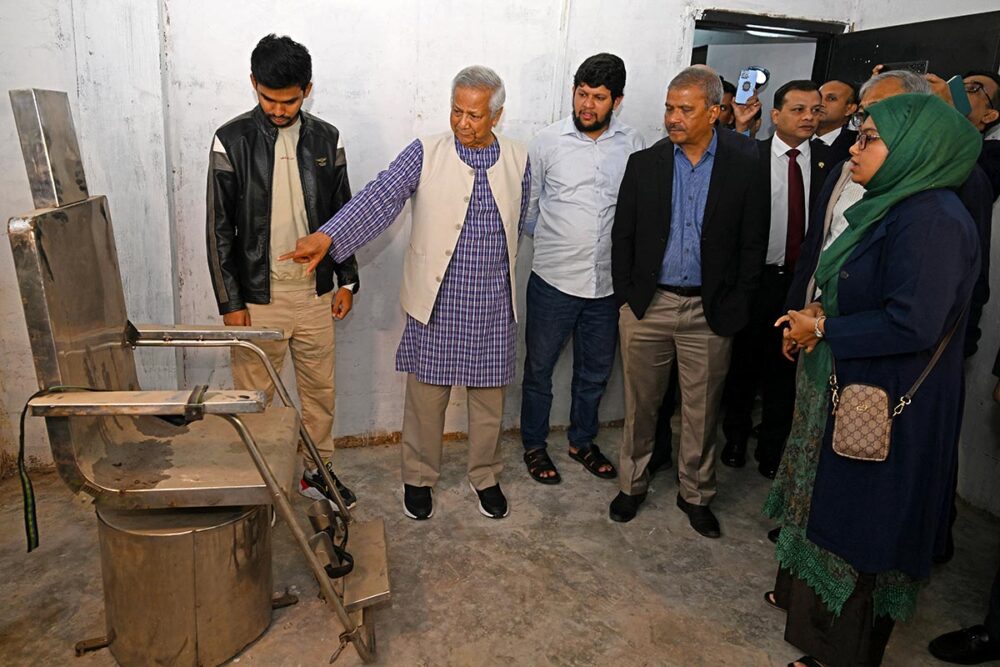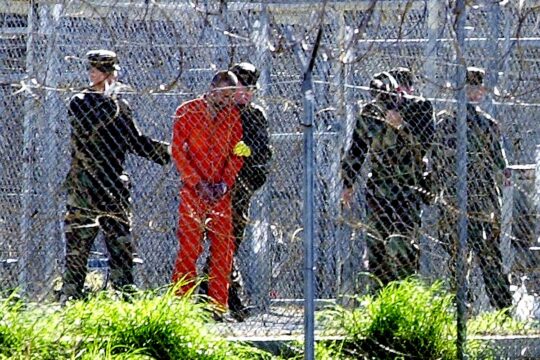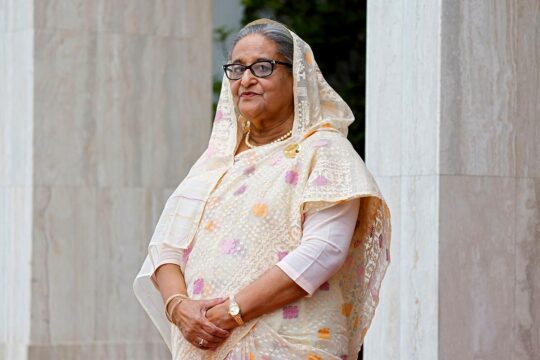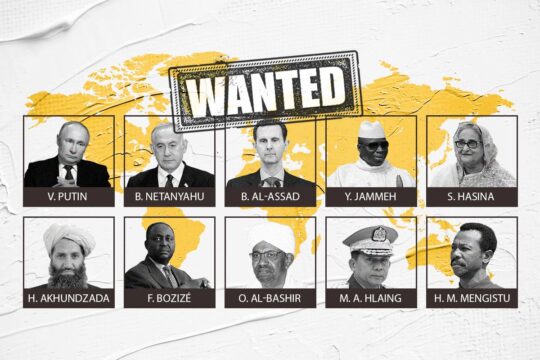The report was submitted to the government in June 2025, but only selected chapters have been made public so far, and what they reveal chills the blood of the reader as they show the extent of the ordeal Bangladesh’s secret detainees went through: a damning second interim report by Bangladesh’s Commission of Inquiry on Enforced Disappearances has linked a “widespread and systematic culture of torture” to the enforced disappearances established during the tenure of the former Awami League government.
Set up in August 2024 by the country’s interim administration, the Commission found that “nearly every secret detention facility” uncovered during its investigation “had specialised interrogation rooms equipped with torture devices”. “Despite significant efforts to destroy evidence after 5 August, we were able to uncover traces consistent with survivor testimonies,” including remnants of a “rotating chair” and a “pulley system used to suspend people”, the report notes, adding that “at almost every destroyed location, remnants of soundproofing materials were found”. This equipment was designed, it claimed, “to muffle the victims' screams and prevent them from being heard beyond the room’s walls”.
“I could even smell burning flesh”
After beatings, which the report stated were a “ubiquitous form of abuse”, the second most common form of torture was the administration of electric shocks. One survivor recalled having electric clips attached to his genitals: “Whenever they put on the switch, I felt my limbs were burning. Sometimes, I could even smell burning flesh.”
The report stated that electric shock machines “were used almost everywhere, including in abduction vehicles” and that one soldier recalled his commander referring to the portable electric shock machine as a “balls machine”, crudely highlighting, the report noted, the “area [of the body] where the shock would be administered”.
Other forms of torture included the use of the “rotating chair”, a device that spun victims at extreme speeds, often causing vomiting, urination, defecation, and loss of consciousness, and waterboarding.
“They started pouring water over a towel covering my face,” said a 27-year-old detainee, quoted in the report. “They poured a whole jug of water on my face. I was suffocating. Then they removed the towel and said, ‘What were you doing?’ I said, ‘Sir, what can I say? Please tell me why you brought me here.’ They said, ‘That won’t do. Put the towel back, pour water again.’ They did this three or four times, then asked others to take me away.”
Mir Ahmed bin Quasem, a lawyer who was secretly detained for eight years after being picked up by law enforcement authorities in August 2016 and released onto the streets of the capital city the day after the fall of the Awami League government on 6 August 2024, told Justice Info that his detention felt “worse than death”. “I didn't see sunlight in eight years. I was blindfolded and handcuffed, I couldn't say when it was day or night. I didn't know what happened to my wife or family, my daughter or my mother. While I was in that cell with no light and not knowing anything, it felt like I had been buried alive.”
Two-thirds of the disappearances linked to state agencies
The Commission recorded 1,772 cases of enforced disappearance between 2009 and 2024. Of these, 1,427 victims were eventually released, either into the criminal justice system or freed after extended periods in secret detention. However, 345 individuals remain unaccounted for.
According to the report, 67% of these disappearances were linked to formal state agencies, particularly the paramilitary Rapid Action Battalion (RAB), and specialized police units such as the Detective Branch and the Counter Terrorism and Transnational Crime unit. The report does not explain who was responsible for the remaining 33 percent of the disappearances.
Sanjida Islam, the coordinator of Mayer Dak (“Mothers’ Call”), an organisation of families of the disappeared, welcomed the report but criticised the focus of the Commission. “Instead of focusing on the cases of those who remained disappeared, the Commission strategically shifted its focus toward those who returned from secret detention centre. While this may offer insight into patterns and perpetrators, it cannot come at the expense of the disappeared who never returned,” she told Justice Info. “This approach left many families – who had provided exhaustive evidence, testimony and date – feeling sidelined and unheard.”
The report also points to the involvement of the military intelligence agency, the Directorate General of Forces Intelligence (DGFI), in some enforced disappearances, adding, however, that the military agency often used law enforcement agencies to carry out the pick-ups.
“Due to DGFI’s limited operational capacity, it frequently relied on RAB intelligence for operational support when conducting abductions,” the report states. “After interrogation and torture, detainees were either returned to RAB or transferred to the Detective Branch, where many were subsequently executed extrajudicially or held under fabricated charges for extended periods.”
From a sample of 253 cases, the Commission found that victims were held for varying periods – from one day to over five years, with a median detention length of 47 days. Fewer than half of these individuals were affiliated with opposition political parties, though the Commission noted that many were reluctant to talk about their political identity.
Sheikh Hasina, “prime facie responsible”
The five-member Commission also provides evidential support to the conclusion from its first earlier report, published in December 2024, that former prime minister Sheikh Hasina was “prime facie responsible for acts of enforced disappearances”.
It states that General Akbar, the former head of DGFI, informed the Commission that he had “directly discussed the case of Humam Quader Chowdhury, a known victim (…) with Sheikh Hasina herself”. “In one case, a junior DGFI officer recalled hearing his director speak about a detainee’s fate in a way that made clear Sheikh Hasina was informed of him and had expressed an opinion on the matter,” the report added.
The commission report describes a “three-tiered pyramid” chain of command responsible for the enforced disappearances. “At the top lies the strategic layer, occupied by key political figures, such as Sheikh Hasina, General Tariq Siddiqui, the Home Minister, and other senior officials, who held the authority to order abductions and extrajudicial killings,” the report states. “Below this is the executive layer, comprising senior Generals and high-ranking members of the police and other security forces. These individuals directly received instructions from the political leadership and, as such, could serve as vital witnesses to their involvement. At the base is the functional layer, made up of lower-ranking personnel within the security apparatus who carried out the operations under orders from above.”
In response to the report, Mohammad Ali Arafat, a former state minister of Information who now speaks for the Awami League, refuted the government’s complicity. “I can say with utmost confidence that there was no political directive or endorsement of any alleged torture, let alone a policy of torture, either from the Prime Minister Sheikh Hasina or her cabinet, or the Awami League as a party,” he told Justice Info. “If any such crime was indeed committed, it would have taken place without the knowledge of the political leadership.”
He went on to blame the country’s “security forces and intelligence agencies tied to the military and armed forces” which, he said, have always acted with very little civilian oversight”. “It is possible that these facilities, if they existed at all, were run without the consent or knowledge of the political government by the officials of the security forces and intelligence agencies.”
Did the current army help accused officers escape?
The report does suggest that the current army command was complicit in allowing six retired army officers escape arrest after the country’s International Crimes Tribunal (ICT) issued warrants against them in January 2025 for their role in enforced disappearances. Two months earlier, the Home ministry had agreed to revoke their passports and the army was told in advance about the issuance of the arrest warrants.
“Those who were within the country and residing in secured, well-known locations in January 2025, including inside the Dhaka cantonment, are now unavailable to the justice process,” the report stated. “This raises serious concerns, particularly given that their passports had been revoked, there appeared to be no alternative travel documents, and the military authorities had been informed in advance of the impending warrants. The implication is that, despite being within reach of enforcement mechanisms, these high-ranking officers were permitted to abscond.”
The report goes on to say that, “this sequence of events has generated deep disquiet about the future of accountability efforts. Those within the security forces who genuinely wish to support this inquiry have privately expressed concern that if such senior figures are allowed to evade justice without consequence, then the institutional will to pursue accountability is perhaps fundamentally compromised.”
On 10 July 2025, the ICT indicted Hasina for the offence of crimes against humanity relating to her role in the killings of hundreds of people by the country’s law enforcement authorities between 16 July and 5 August 2024, the day Hasina flew out to India. Also indicted on five charges are former Home minister Asaduzzaman Khan, also believed to be in India and former police chief Chowdhury Abdullah Al-Mamun who has agreed to give evidence against his two co-defendants as a state witness in exchange for a reduced sentence.
Bangladesh’s interim government, headed by Nobel Peace Prize laureate Muhammad Yunus, sent a formal request to India for Hasina’s extradition, but India has not responded. Hasina and Khan will be tried in absentia.







